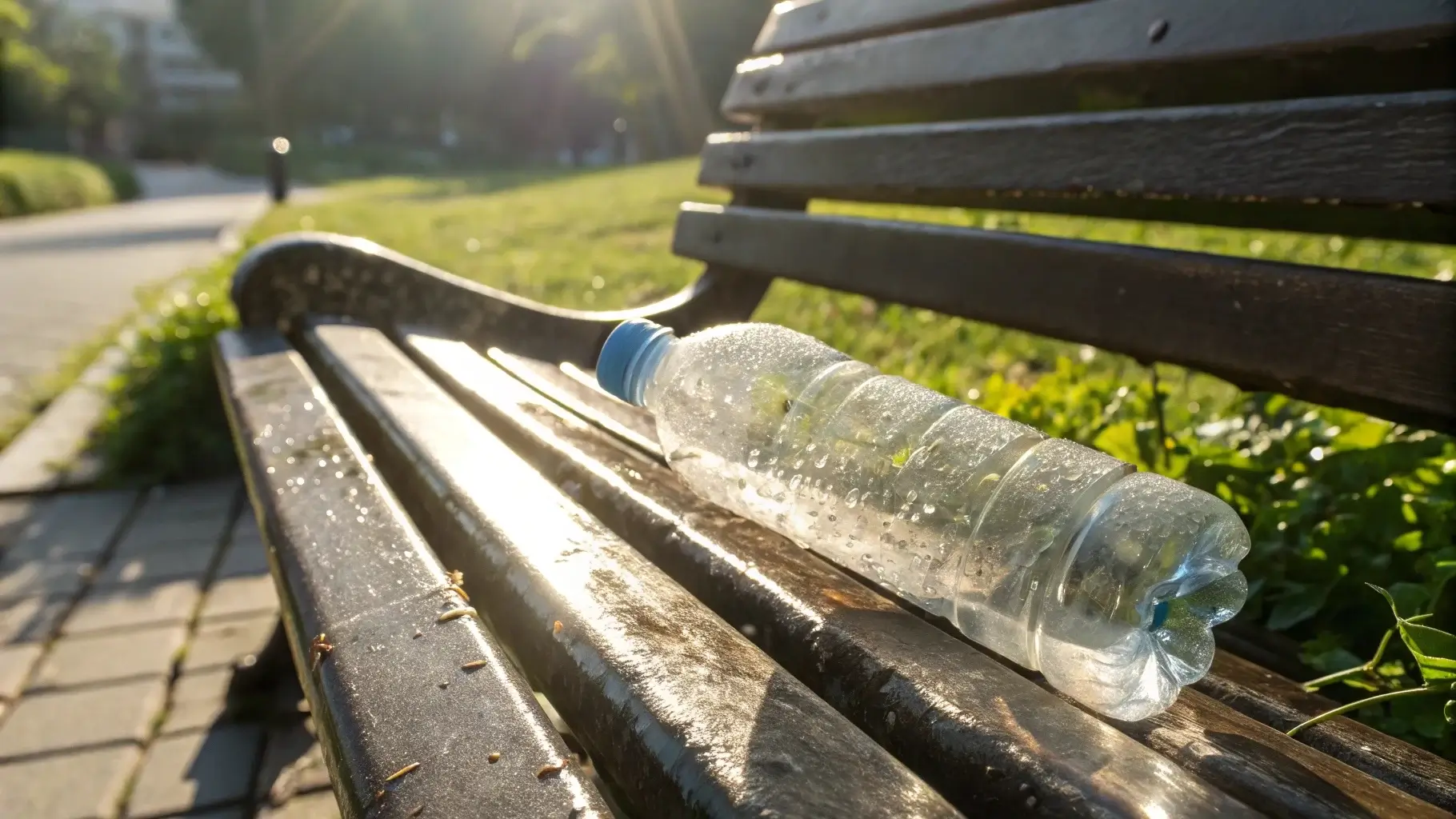
Leaving a plastic water bottle in the sun can pose serious health and environmental risks. Sunlight can cause the plastic to degrade, releasing harmful chemicals into the water, affecting its safety.
Leaving a plastic water bottle in direct sunlight can lead to the release of volatile organic compounds (VOCs) and chemical leaching, potentially making the water unsafe for consumption.
To protect your health and the environment, it is important to understand how sunlight affects plastic bottles and explore safer alternatives.
What Happens When You Leave a Plastic Water Bottle in the Sun?
Leaving a plastic water bottle in the sun accelerates its degradation, releasing harmful chemicals into the water. This process, known as photodegradation1, occurs due to prolonged exposure to ultraviolet (UV) rays.
Plastic bottles exposed to sunlight can leach harmful chemicals like alkanes, aldehydes, and acids into the water. This can reduce water quality and pose health risks.
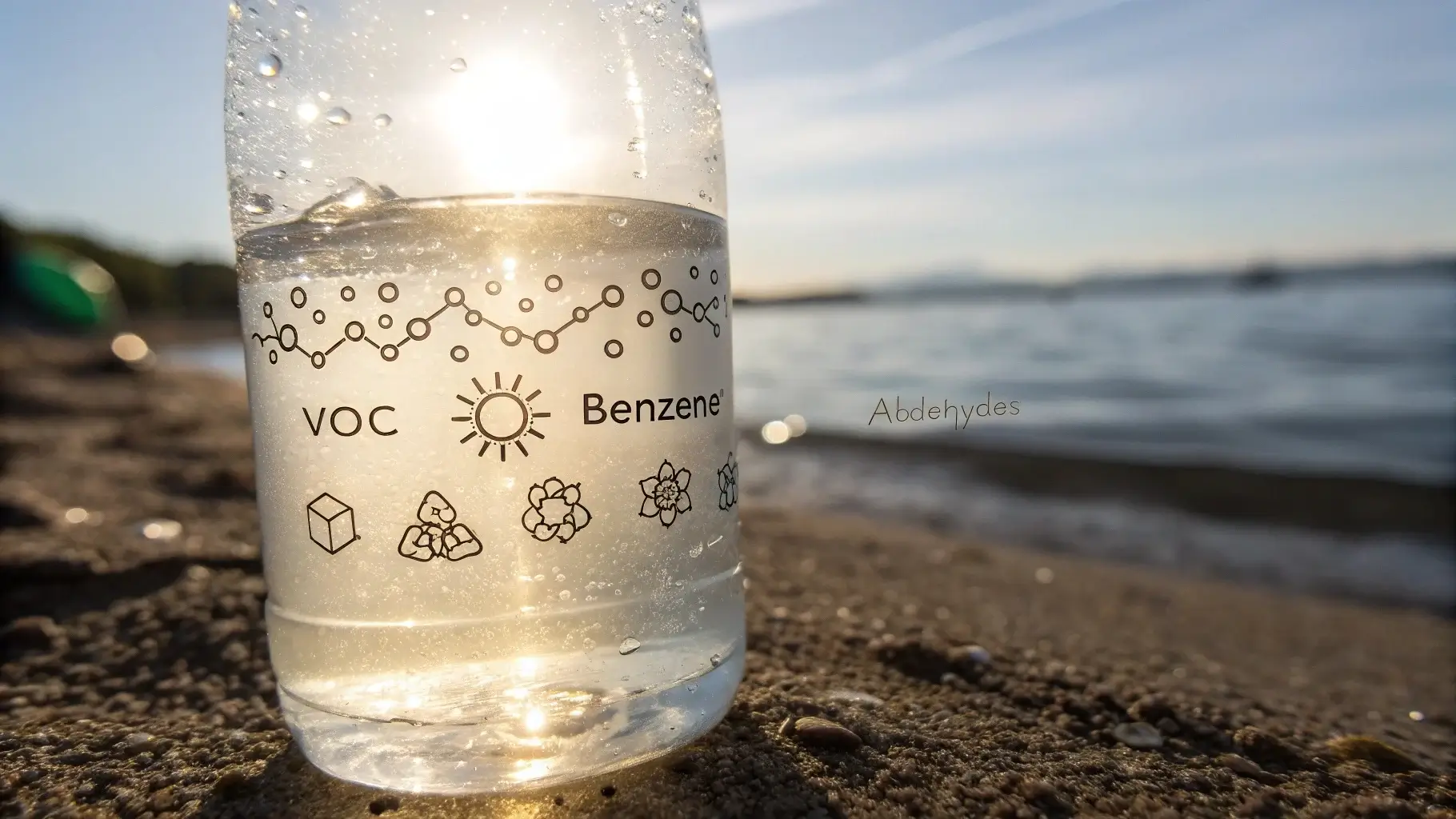
Understanding Photodegradation
When plastic bottles absorb UV radiation, their chemical bonds break down, releasing toxic substances into the water. This process results in:
- Increased leaching of harmful substances.
- Faster degradation of plastic, leading to microplastic contamination2.
- A reduction in the bottle's structural integrity.
Studies have found that plastic bottles left in direct sunlight release volatile organic compounds (VOCs) such as benzene and formaldehyde3, which can pose serious health risks.
Is It Safe to Drink from a Plastic Bottle Left in the Sun?
Many people wonder if drinking from a plastic bottle left in the sun is safe. Scientific research suggests it is not.
Water from a sun-exposed plastic bottle can contain harmful VOCs and other toxic chemicals that could pose long-term health risks.
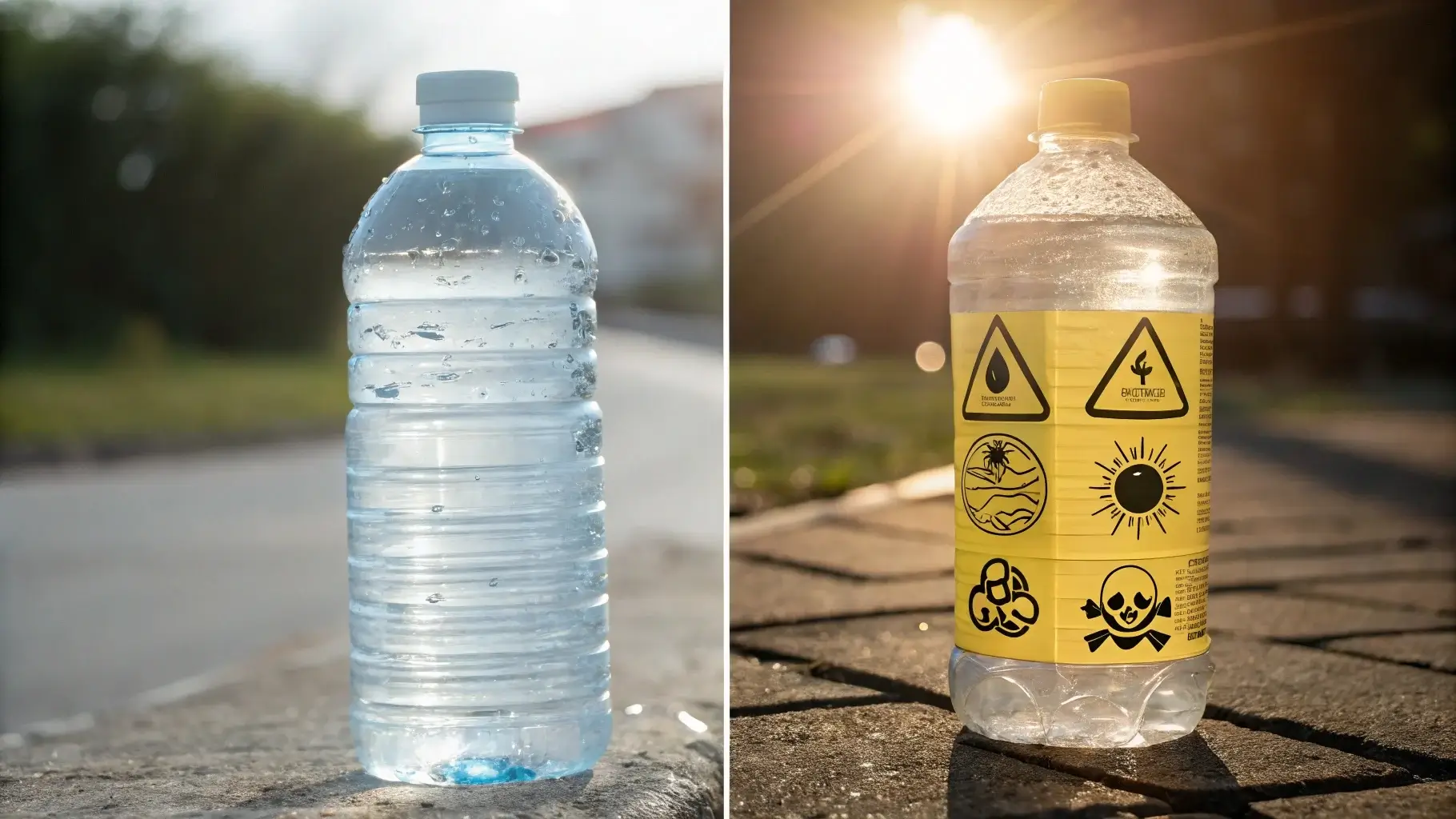
Chemical Leaching and Its Health Risks
Prolonged sun exposure causes plastic to release toxic substances into the water, including:
| Chemical | Health Risk |
|---|---|
| Benzene | Carcinogenic; may increase cancer risk |
| Formaldehyde | Can cause respiratory issues and irritation |
| Acetaldehyde | Known to cause DNA damage |
Repeated exposure to these chemicals, even in small amounts, can contribute to long-term health issues.
How Long Can a Plastic Water Bottle Be Left in the Sun Before It Becomes Unsafe?
There is no universal timeframe, but experts suggest that exposure beyond a few hours increases contamination risks.
Plastic water bottles exposed to the sun for more than a few hours can release unsafe levels of chemicals, compromising water quality.

Factors Affecting the Safety of Bottled Water
The speed at which a plastic bottle becomes unsafe depends on:
- Temperature: Higher temperatures accelerate chemical leaching.
- Bottle Material: PET bottles degrade faster than stainless steel or glass.
- Sunlight Duration: Extended exposure increases risk.
A 2023 study found that plastic bottles exposed to direct sunlight for 12 hours4 contained significantly higher levels of VOCs than bottles kept in the shade.
What Are the Health Risks of Drinking from a Sun-Exposed Plastic Bottle?
The health risks of drinking water from a plastic bottle left in the sun depend on the level of exposure and the chemicals released.
Prolonged exposure to VOCs and microplastics from plastic bottles can lead to cancer risks, hormonal imbalances, and organ damage.
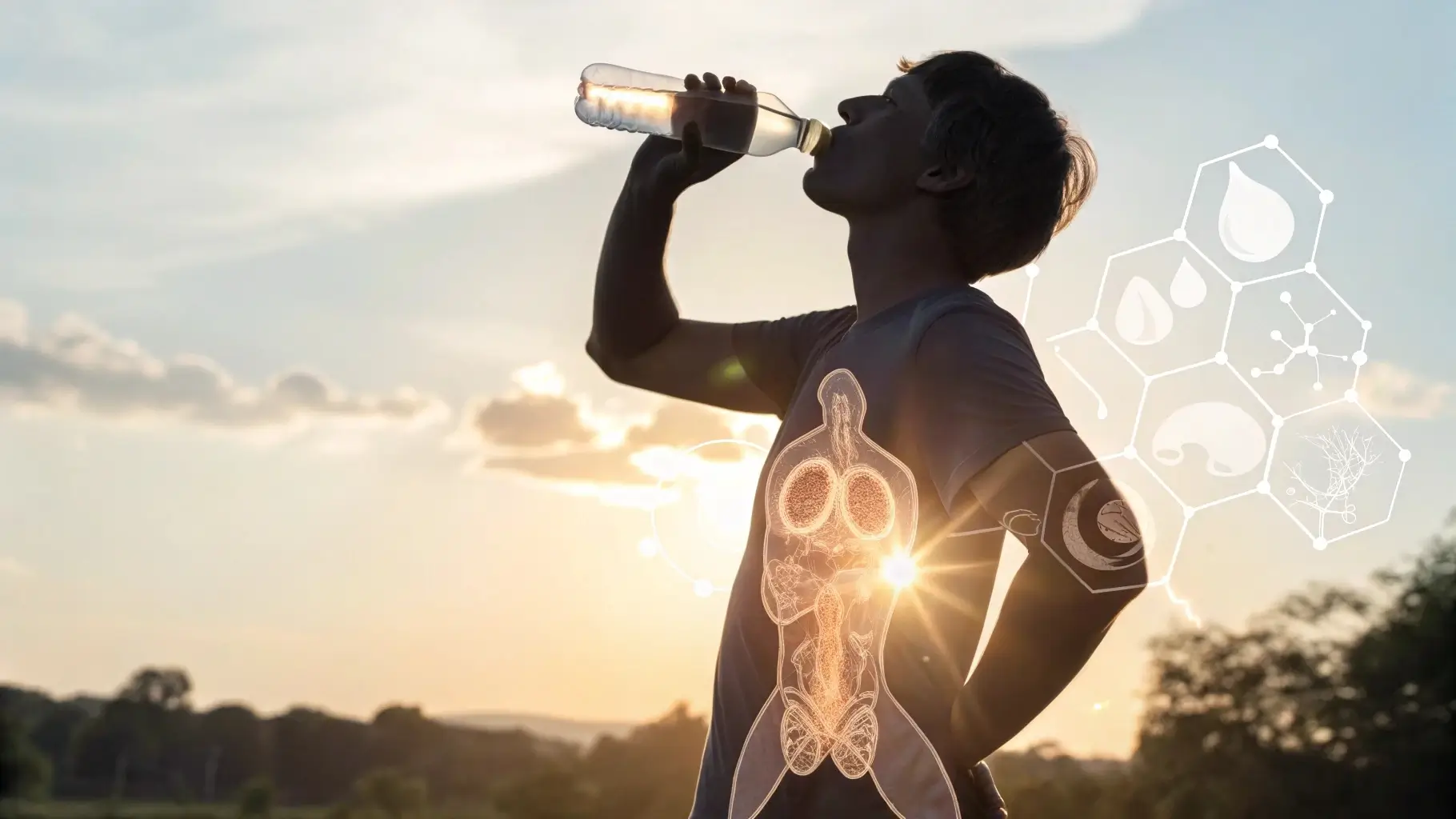
Potential Health Effects of Chemical Exposure
- Carcinogenic Risks: Some VOCs, such as benzene and formaldehyde, are linked to cancer.
- Hormonal Disruption: Endocrine-disrupting chemicals (EDCs) from plastics can interfere with hormone function.
- Liver and Kidney Damage: Long-term consumption of contaminated water can stress vital organs.
Microplastics from degraded bottles have also been found in human bloodstreams, raising concerns about their long-term health impact.
Are There Safer Alternatives to Plastic Water Bottles?
Considering the risks of plastic degradation, using alternative materials for water storage5 is recommended.
Stainless steel and glass water bottles are safer alternatives as they do not degrade under sunlight and do not leach harmful chemicals.
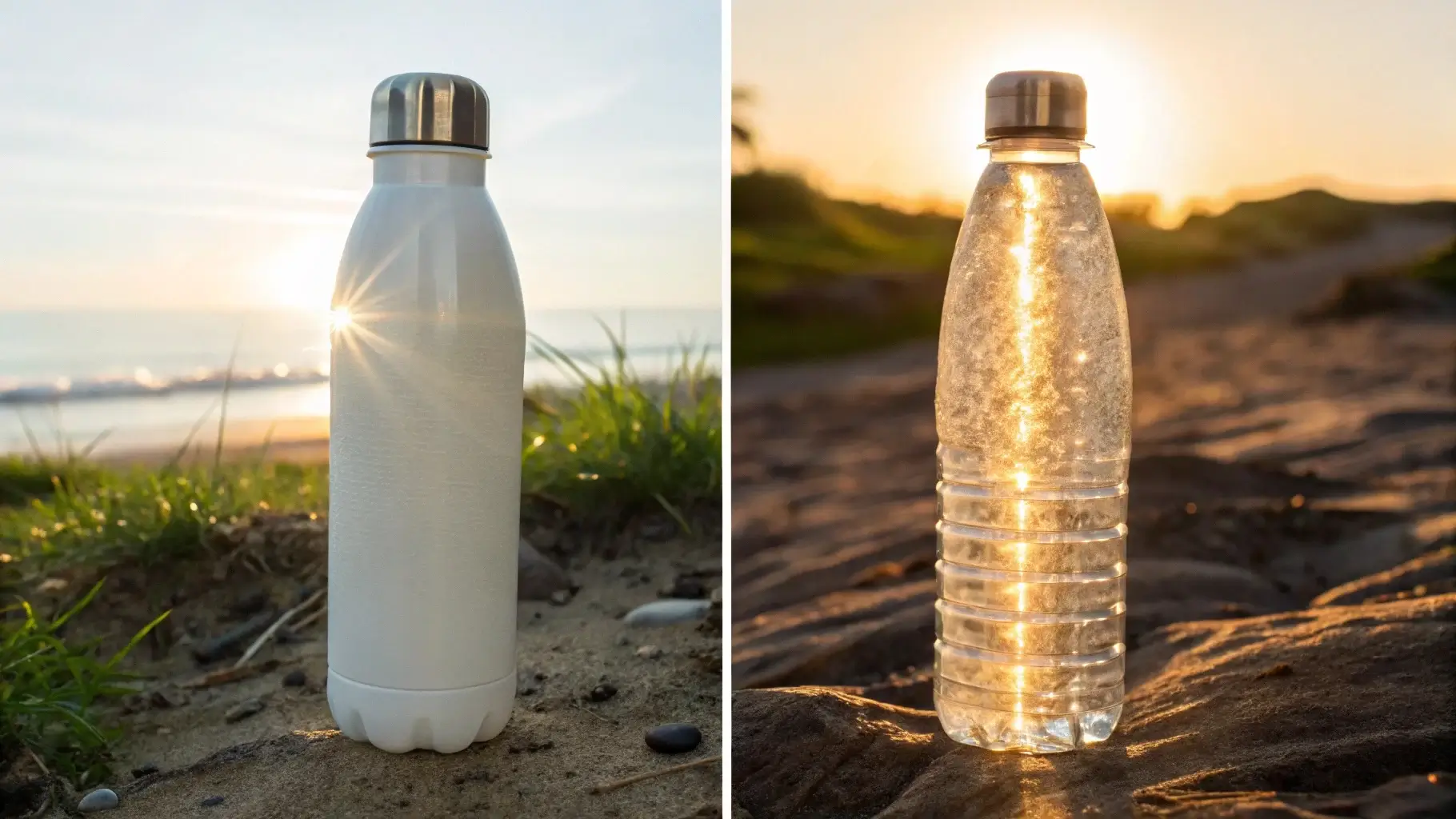
Comparing Water Bottle Materials
| Bottle Type | Pros | Cons |
|---|---|---|
| Plastic (PET) | Lightweight, affordable | Degrades in sunlight, releases harmful chemicals |
| Glass | Safe, does not leach chemicals | Heavier, fragile |
| Stainless Steel | Durable, maintains water temperature, chemical-free | Slightly more expensive |
Glass and stainless steel bottles offer long-term safety, especially for outdoor activities where exposure to sunlight is inevitable.
Safe Storage Practices for Water Bottles
Proper storage can significantly reduce the risks associated with plastic water bottles.
To ensure water safety, store plastic bottles in cool, shaded areas and avoid prolonged exposure to direct sunlight.
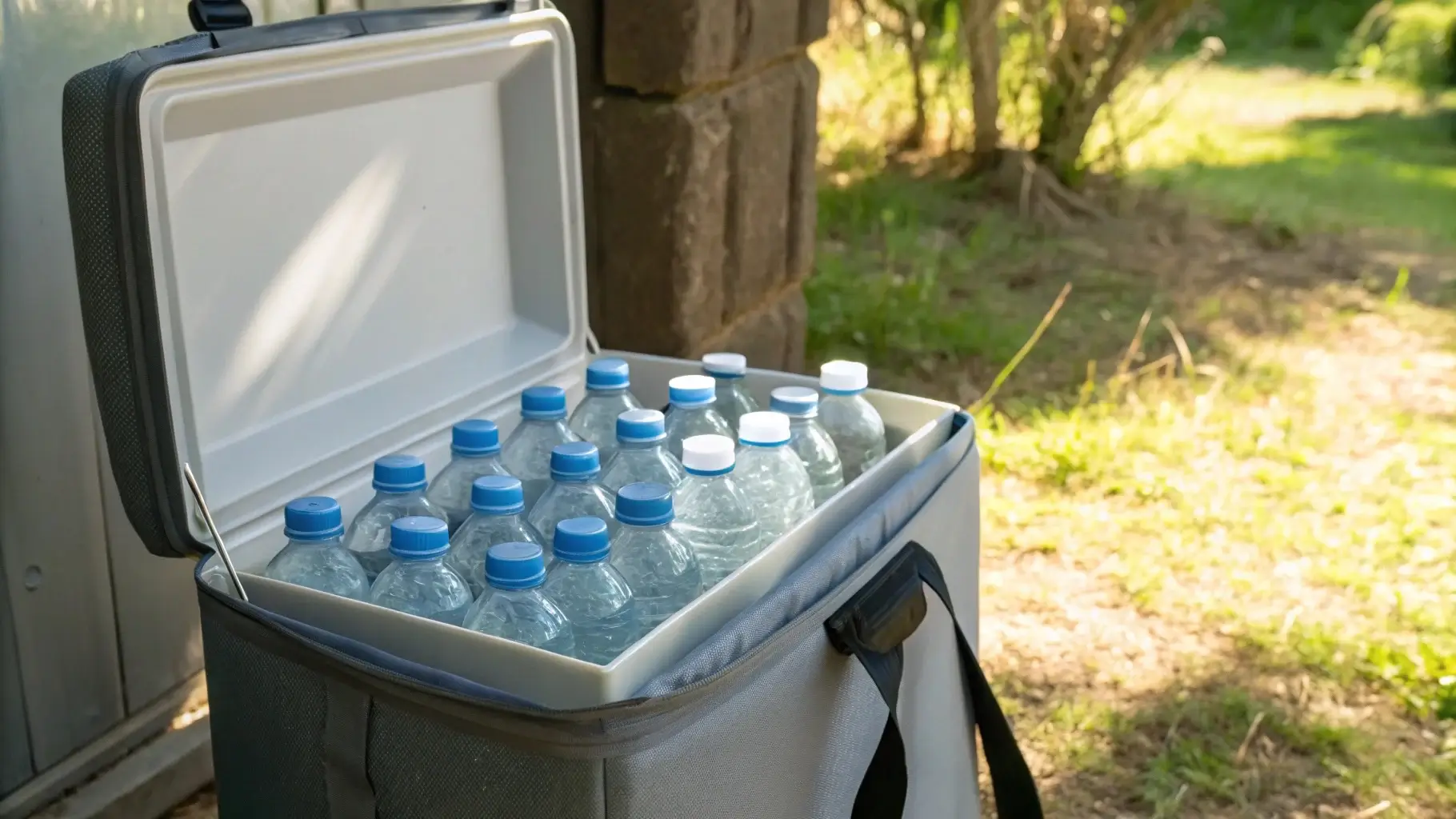
Best Practices for Storing Water Bottles
- Keep bottles in shaded or indoor spaces.
- Use insulated carriers when transporting plastic bottles outdoors.
- Replace plastic bottles regularly to minimize chemical leaching.
- Choose BPA-free plastic6 if no alternative is available.
If storing water for extended periods, opting for glass or stainless steel containers is the safest choice.
Conclusion: Best Practices for Water Bottle Use
Plastic water bottles exposed to sunlight can release harmful chemicals, posing health and environmental risks. To minimize these risks, consider using stainless steel or glass alternatives and always store water bottles in shaded, cool places.
-
Understand the photodegradation process and how UV rays break down plastic at a molecular level. ↩
-
Explore how microplastics enter drinking water and the potential health risks associated with them. ↩
-
Access research-backed data on VOCs detected in plastic bottles after sun exposure. ↩
-
Review scientific studies showing how VOC levels rise in plastic bottles exposed to direct sunlight. ↩
-
Find safer alternatives to plastic bottles and how they compare in safety and usability. ↩
-
Learn the pros and cons of BPA-free plastic and whether it's a reliable option under sun exposure. ↩

